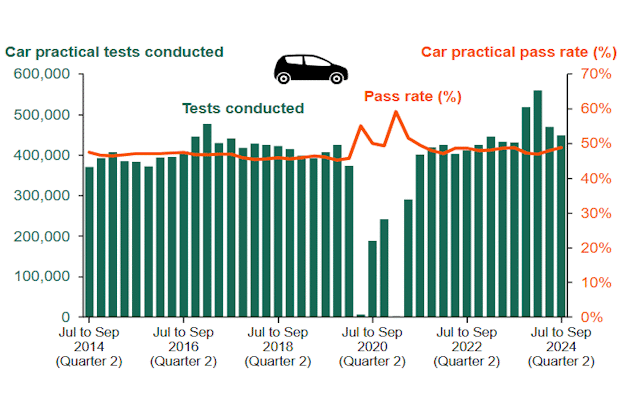(Updated 2025 – FQ Driving Academy)
Everyone wonders how many mistakes they can make on test day and still pass.
The good news? You don’t need a perfect drive to pass your UK driving test.
You can make up to 15 driving faults (also called minors) and still pass – but even one serious or dangerous fault means an automatic fail.
This guide explains how the DVSA marking system works, what counts as a minor, and how to keep your score low on test day.
Understanding the DVSA Marking System
The examiner records your performance digitally using three types of faults:
- Driving Fault (Minor): Small, low-risk mistake (like a slightly late signal or rough gear change). You can have up to 15 and still pass.
- Serious Fault: A significant mistake that could become dangerous if repeated (e.g. poor observation at a junction). One serious fault = fail.
- Dangerous Fault: An error that causes immediate danger or requires examiner intervention. One dangerous fault = fail.
Examiners don’t expect perfection – they want to see safety, control and awareness.
How Many Minors Can You Get?
You’re allowed a maximum of 15 minor faults. If you make 16 or more, you fail automatically.
However, repeating the same fault several times can upgrade it to a serious fault.
Example:
- Two clutch-control errors → still minor.
- Five clutch-control errors → may count as a serious control issue.
Instructor tip:
“It’s not about perfection – it’s about safety. Repeated faults show you haven’t learned to self-correct, which is what examiners look for.”
What Counts as a Minor Fault?
Usually considered minor if corrected safely:
- Stalling once (and recovering calmly)
- Slightly clipping the kerb during a manoeuvre
- Missing a gear change
- Brief hesitation at a junction
- Forgetting a mirror check once when it doesn’t affect others
Becomes serious or dangerous when:
- You pull out and make another driver brake
- You fail to check mirrors before changing lanes
- You mount the pavement
- You ignore a traffic sign or a red light
- You lose full control of the vehicle
How Examiners Judge Your Driving
Examiners look at four key areas:
- Control – smooth use of clutch, accelerator, steering
- Observation – mirror checks and general awareness
- Judgement – spacing, speed and timing
- Response to Signs and Markings – obeying limits and directions
They also watch how you recover from mistakes. A calm correction shows you’re in control – panic or unsafe reactions make it worse.
Tips to Keep Your Fault Count Low
- Use the MSM routine: Mirror, Signal, Manoeuvre every time.
- Look ahead: Spot hazards early and plan your moves.
- Control your speed: Stay steady and legal.
- Stay calm after mistakes: One error doesn’t end your test.
- Practise manoeuvres: Reversing, parking, junction work.
- Take mock tests: Simulate real-test pressure.
Instructor insight:
“Examiners notice recovery. A learner who calmly fixes a small mistake looks safer than one who panics.”
What Happens if You Fail?
You’ll fail if you get:
- One or more serious or dangerous faults, or
- 16 or more minor faults.
You’ll receive a driving test report showing all faults and where they happened. Review it with your instructor before re-booking.
You can book another test after 10 working days via GOV.UK.
Free Newsletter Signup
Subscribe to our newsletter below and never miss the latest UK driving lessons and theory tests updates.
Frequently Asked Questions
How many minors can you get and still pass?
Up to 15 driving faults. Sixteen or more is a fail.
What if I get the same minor several times?
If repeated, it can be recorded as a serious fault.
Can I still pass if I stall?
Yes – if you recover quickly and safely without affecting others.
How strict are examiners about mirror checks?
They expect consistency. Missing one occasionally is fine; missing when it affects safety is serious.
How many people pass the first time?
Roughly 47% of learners in the UK (DVSA 2024 data).
Final Thoughts
The driving test isn’t about being flawless – it’s about being safe, calm and consistent.
You can make small mistakes and still pass if you stay aware and in control.
For more help, read:
- Driving Test Faults Explained
- Top Reasons Learners Fail (And How to Avoid Them)
- What Happens on Test Day
Source: Based on DVSA test marking guidance, with instructor insight from FQ Driving Academy. Official info: GOV.UK – Driving Test: What Happens




